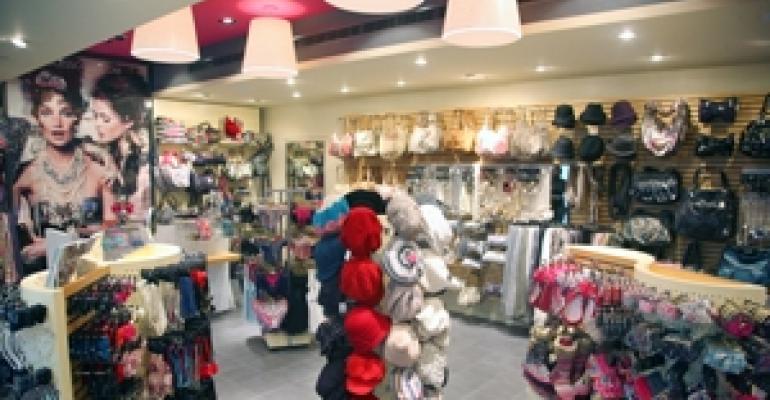British retailer Accessorize is plotting a course for U.S. growth. The chain, which already operates more than 1,000 stores in 65 countries, plans to make a major push stateside over the next several years.

Founded in 1984, Accessorize sells house-designed jewelry, hats, bags, cosmetics and hair accessories for women aged 18- to 35-years-old. Because of what it considers its attractive price points (necklaces, for example, sell for $20 to $25; bags go for around $40), the chain felt the current economic environment presented a perfect opportunity for it to move into the U.S., according to George Simon, managing director with Monsoon Accessorize USA Inc., the retailer’s parent company.
Accessorize has already opened three stores in the Mid-Atlantic region, including two in Virginia and one in Washington, D.C. Before the end of the year, it will open three more stores in New York. By 2015, the chain hopes to grow its U.S. store fleet to 100 locations, primarily on the East and West Coasts. Its global goal for 2011 is to open 125 new stores.
“We will cluster each market to gain efficiency of the operation before spreading much further,” says Simon. “For now, we are concentrated on the East Coast and will likely be that way for the near term. Ultimately, as we do expand, and given the population density, this automatically leads us West, but in terms of population we will be looking at Texas and Chicago in out years as well.”

The move into the U.S. market makes sense for a chain like Accessorize because it will have virtually no direct competition here, according to Craig Johnson, president of Customer Growth Partners, a New Canaan, Conn.-based retail consulting firm. Most U.S.-based accessories chains cater to a younger, teenage demographic. Meanwhile, a brand like Coach might sell similar products, but has a much higher price range.
In addition, the retailer could help landlords fill empty spaces left over from jewelry chains like Whitehall and Zales, Johnson says. Whitehall Jewelers liquidated in 2008, leaving 373 locations. Zales, which is still operating, closed a total of 296 stores in 2008 and 2009.
“The malls are still very close to record vacancy rates and there is a lot of space still available,” Johnson notes. “And I think a place like Accessorize, which includes jewelry in its merchandise, will be a very good fit for all these jewelry stores that have gone bankrupt in the last couple of years. And it’s good from a branding point of view to have a new concept in the mall.”
Accessorize stores range between 400 square feet and 900 square feet and the company prefers to enter areas with high population density and high traffic counts. Its existing store in Washington, D.C., for example, is located at Union Station. Its stores in Virginia are positioned at the Pentagon and at Tyson’s Corner Center, the largest mall in the state. Two of its upcoming New York locations will be on high traffic Manhattan streets.
Going forward, the chain will continue to scour the U.S. for urban street front locations, as well as spaces in enclosed malls and at transportation terminals, according to Simon. When possible, it prefers to locate near retailers that serve the same demographic as Accessorize—young, fashion-conscious women who want value for their money.
So far, Simon says the chain has been able to take advantage of the favorable market conditions in the U.S. to secure attractive lease terms.
“We’re one of the few proven global retailers… and know how to operate in many geographic zones,” he notes. “That, alongside the fact we’re a new concept to this market, is a strong plus for many landlords. We’ve been able to secure some prime locations as there are fewer qualified retailers in the marketplace and [we] feel that we’ve made some good commercial transactions.”

